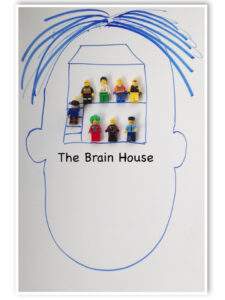
When children understand what’s happening in the brain, it can be the first step to having the power to make choices. Knowledge can be equally powerful to parents too. Knowing how the brain works means we can also understand how to respond when our children need our help.
Sometimes our brains can become overwhelmed with feelings of fear, sadness or anger, and when this happens, it’s confusing—especially to children. So giving children ways to make sense of what’s happening in their brain is important. It’s also helpful for children to have a vocabulary for their emotional experiences that others can understand. Think of it like a foreign language, and if the other people in your family speak that language too, then it’s easier to communicate with them.
So how do you start these conversations with your children, make it playful enough to keep them engaged, and simple enough for them to understand?
Here is how I teach children (and parents) how to understand the brain.
Introducing the Brain House: The Upstairs and the Downstairs
I tell children that their brains are like a house, with an upstairs and a downstairs. This idea comes from Dr. Dan Siegel and Tina Payne Bryson’s book The Whole-Brain Child and it’s a really simple way to help kids to think about what’s going on inside their head. I’ve taken this analogy one step further by talking about who lives in the house. I tell them stories about the characters who live upstairs, and the ones who live downstairs. Really, what I’m talking about are the functions of the neocortex (our thinking brain: the upstairs), and the limbic system (our feeling brain: the downstairs).
Who Lives Upstairs and Who Lives Downstairs?
Typically, the upstairs characters are thinkers, problem solvers, planners, emotion regulators, creatives, flexible and empathic types. I give them names like Calming Carl, Problem Solving Pete, Creative Craig and Flexible Felix
The downstairs folk are the feelers. They are very focused on keeping us safe and making sure our needs are met. Our instinct for survival originates here. These characters look out for danger, sound the alarm and make sure we are ready to fight, run or hide when we are faced with a threat. Downstairs we’ve got characters like Alerting Allie, Frightened Fred, and Big Boss Bootsy.

Add Your Comments